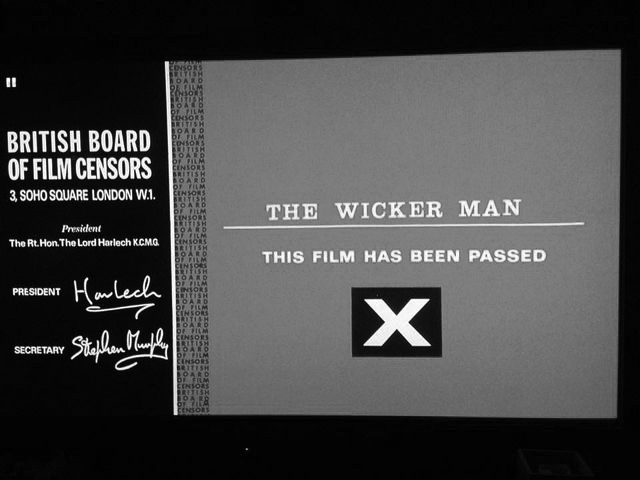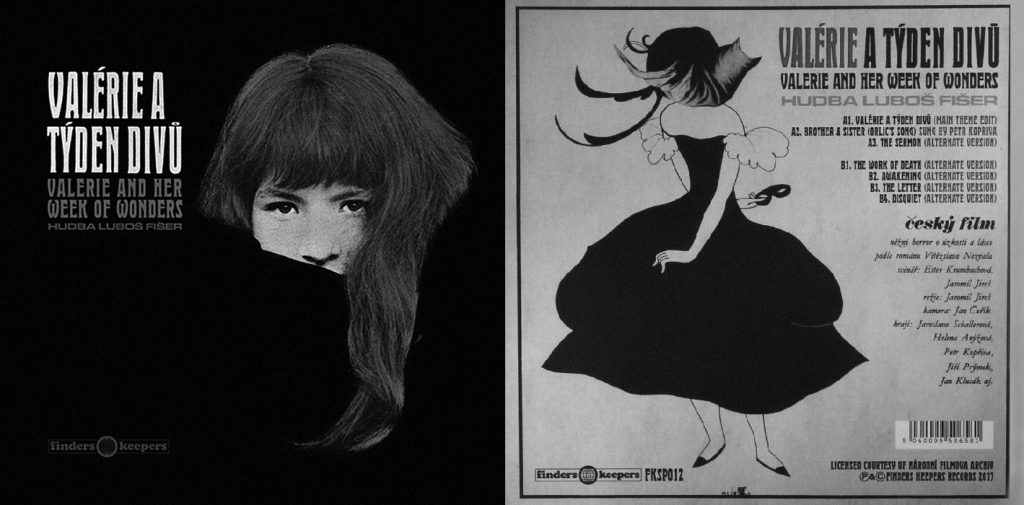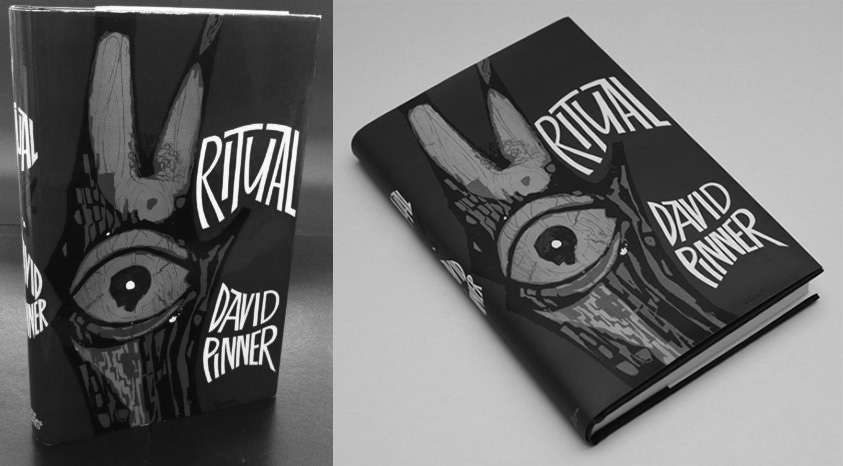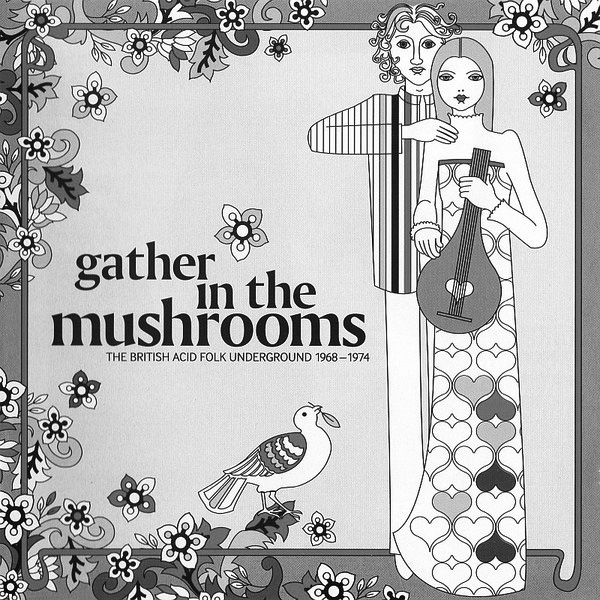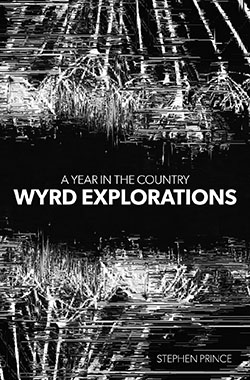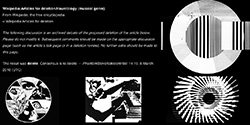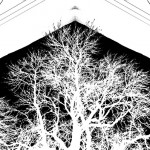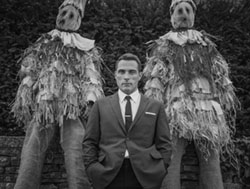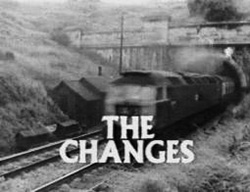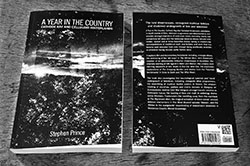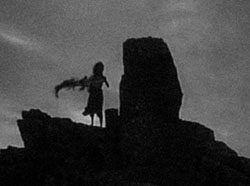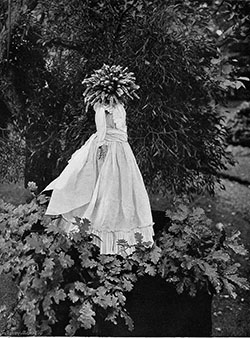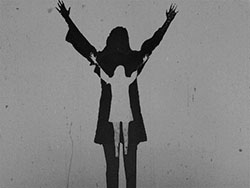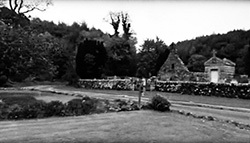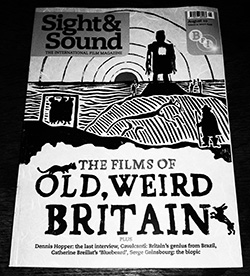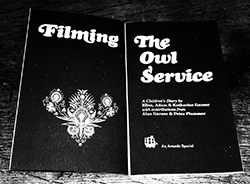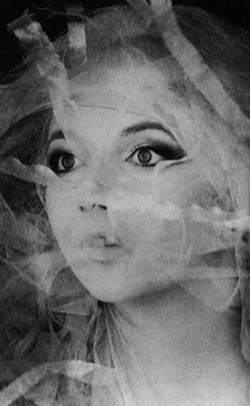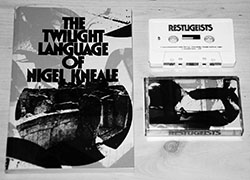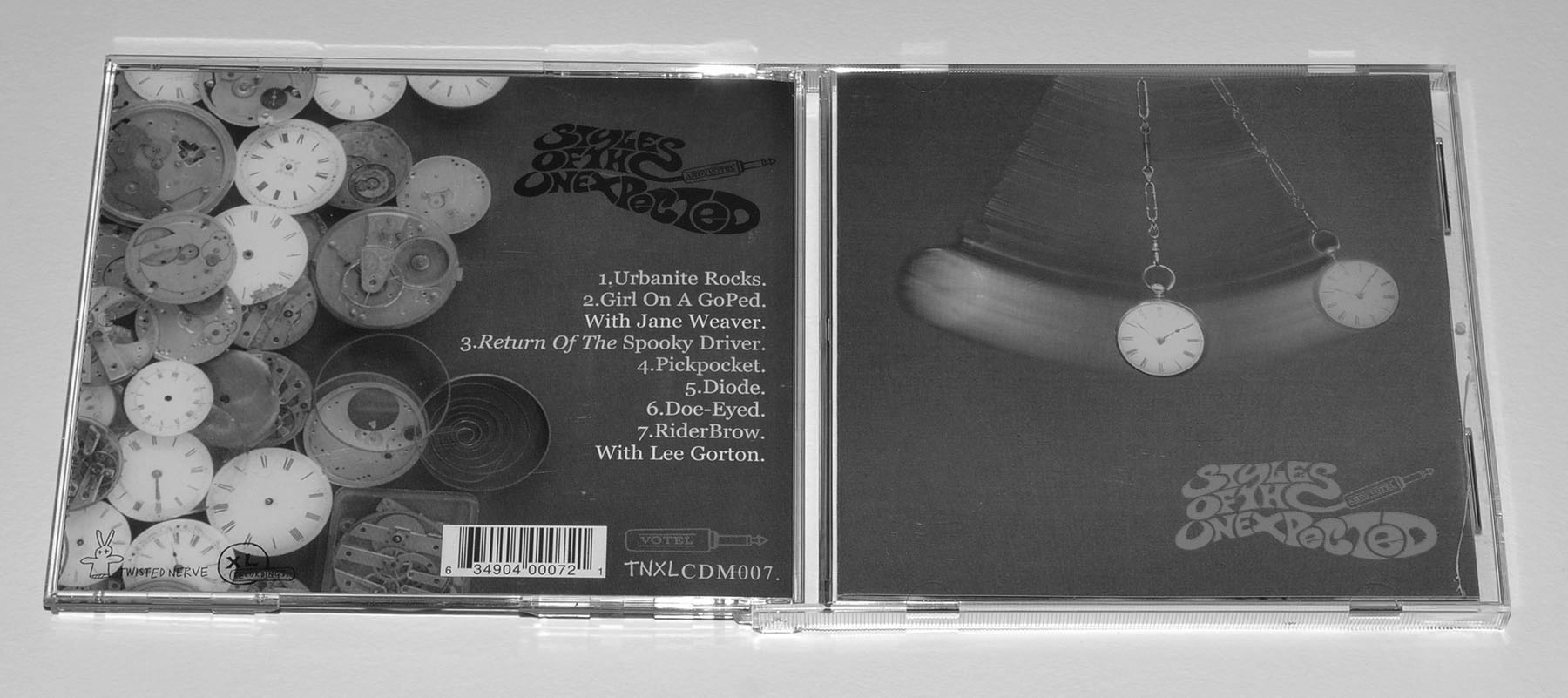
It’s been curious how a number of times as I’ve wandered through the “spectral” cultural fields that make up A Year In The Country, I’ve realised that work I’ve been exploring and writing about was created by people whose work I’d come across long before.
For example, as I wrote in the 2019 book A Year In The Country: Straying From The Pathways, a number of the people who have gone on to create music of a hauntological-esque nature, had previously created trip hop related music that I’d come across back in the 1990s.1 I’d also first explored Julian House of Ghost Box Records work in the late 1990s and early 2000s via the graphic design work he created for the likes of Primal Scream’s XTRMNTR album which was released in 2010, some of Depeche Mode’s hits compilation albums, a book cover design he did for a George Orwell reissue etc.
All of which brings me to musician, DJ, record producer, graphic designer and record label co-founder Andy Votel’s2 Style of the Unexpected album; this was originally released in 2000, I think collaboratively, by Twisted Nerve (a label which Andy Votel co-founded in 1997 with Damon Gough aka Badly Drawn Boy prior to Votel co-founding the archival label Finders Keepers Records with Doug Shipton and Don Thomas in 1999) and XL Recordings.
I’d first discovered tracks from Styles of the Unexpected via the indie music orientated music magazine Select (1990-2001) in the early 2000s, which included the album’s “Return of the Spooky Driver” on one of its cover mount CDs.
I had something of a fondness for Select and if memory serves correctly it seemed, particularly towards the end of its run, to in part focus on and offer a more refined or even populist-ly thoughtful, intelligent and eclectic take on indie, electronic etc music than some other mainstream music magazines of the time; a focus that was often reflected on the magazine’s cover mount CDs.
As with much of Andy Votel’s music, Styles of the Unexpected is heavily layered with samples, alongside which much of his work, in whatever area, has involved variations on and been the results of a self-declared obsessive seeking out of work from the hidden corners of culture. This has been accompanied by and incorporated into an often-unexpected layering, juxtapositioning and “recontextualising” of different styles, genres and so on, which has included a “genre defying” catalogue of releases by Finders Keepers Records, and of which he has said:
“I got into buying [the hip hop group’s The Fat Boys and Boogie Down Productions] records when I was about 11 or 12 and was instantly obsessed with the home-made aesthetic of looping other people’s intros and layering culturally disparate forms of music… By the time I was 14 I was also buying heavily sampled records… and looping them inside compact cassettes which my dad had taught me to do with my own voice and sections of [composer and guitarist] John Fahey tapes when I was younger… [Boney and me who I was in the hip hop group Violators of the English Language with] were always looking for our own un-used samples… we started checking out anything remotely psychedelic but making sure it was still obscure and varied enough to be interesting… [and] everything I’ve done creatively since has been a direct progression from my hip hop approach to pursuing obscure music.” (Quoted from “Andy Votel: Questions of Doom”, author unknown, Bad Vibes (gimmebadvibes.com), 2014.)
Revisiting the music on Styles of the Unexpected decades later was a curious thing, as in some ways it seems like both a precursor and a bridge between later 1990s downbeat melodic instrumental trip hop that was often to varying degrees found sound/sample based (think DJ Shadow’s 1996 album Endtroducing, Nightmares on Wax’s 1999 album Carboot Soul etc) and more recent hauntological-orientated electronica.
In particular the above-mentioned track “Return of the Spooky Driver” has a spectral, quietly glitchy melancholia that wouldn’t seem all that out of place amongst contemporary hauntology, which in this instance is spliced and intertwined with driving upbeat interludes that wander towards, but stay shy of, the sometimes almost cartoon-like character of late 1990s big beat music, which often incorporated and could be considered a catchier, more populist and dance-floor friendly flipside to that period’s instrumental trip hop.
The spectral hauntological-esque quality of the track inter- connects with and can be seen as being part of Andy Votel’s deeply running and to a degree hidden in the undergrowth roots in wyrd and hauntological related culture, which stretch back to long before such things had become more culturally prominent.
His first music release was a “Votel Remix” by him and Rick Myers (who was also a member of the previously mentioned group Violators of the English Language) of the track “Sea Mammal” on musician and DJ Mr. Scruff’s The Frolic EP (Part 2) which was released in 1996. This sampled music from the now iconic folk horror film The Wicker Man’s soundtrack and has a loping hypnotic trip hop “vibe” where far off seeming refrains from the soundtrack repeatedly loop in and out.
His second EP, which was also both his first solo record and the first release under the name of Andy Votel, was the 1997 12” EP Hand of Doom. The main track on this was a vocal trip hop- esque cover of heavy metal/rock band Black Sabbath’s “Hand of Doom which was included on their iconic second album Paranoid (1970). When listened to now the EP’s cover of the track is an evocative time capsule of narcoleptically noirish 1990s trip hop aesthetics, while on the B-side one of the tracks samples the also now iconic 1971 folk horror film Blood on Satan’s Claw.
While on his second album, 2002’s All Ten Fingers, the title of the track “The Viy” is a reference to the 1967 Soviet proto folk horror film Viy, which had been released on DVD for the first time in 2001; the music on this track has a quietly haunting background and a subtly exotically folkish sounding plucked refrain that would easily slot into a contemporary folk horror/ wyrd orientated concept album.
Probably the oddest and most “culturally disparate” example of his “deep running… hidden in the undergrowth roots in wyrd and hauntological related culture” is his 1997 remix of the pop rock band Texas’ at that time unreleased single “Say What You Want” which would go on to reach number three in the UK singles chart. His remix samples, amongst other things, the then also unreleased soundtrack to the 1970 surreal coming of age dark fantasy horror film Valerie and her Week of Wonders, which is part of the Czech New Wave of film and which has come to be a prominent touchstone within contemporary wyrd culture.
However, when Votel told the major label which Texas were signed to about the samples he had used on the remix they shelved the release but it was released as a limited white label 12” and can also be listened to online at Finders Keepers Records’ Soundcloud page.
The remix is an intriguingly odd thing to listen to today, a curious slice of culture that seems almost as though it belongs to a parallel world where the “injection” of then (and still to quite a degree) obscure Soviet era film culture into mainstream British pop culture was the norm.
In more recent years between 2010-2012, Andy Votel released music as Anworth Kirk on the Pre-Cert Home Entertainment label and also Folklore Tapes. This pseudonym is taken from the name of one of the locations where The Wicker Man was filmed and the music he created under this name have a notably “spooky” folk horror-esque and pastoral occult-like atmosphere.
As with much of his above-mentioned earlier work they are also more than a little “plunderphonic”-like in their extensive use of found sounds and samples. At times they also veer towards some of the tropes and aesthetics of trip hop, albeit without the loping downbeat drum patterns of trip hop and some of his earlier work, and indeed if the drum patterns etc were added to or stripped away from that earlier work and the Anworth Kirk releases they could quiet easily tumble back and forth and be placed in his releases from over the decades.
There are also other much more overt lines of connection and intersection between Andy Votel’s work and the core of wyrd culture as in 2009 Finders Keepers Records, which as I mentioned above he co-founded, released the Willow’s Songs compilation album which showcased the British folk songs that inspired the soundtrack to The Wicker Man.
Traditional song “Highland Lament”, a different version of which accompanies the opening scenes of the film, is for myself one of the standout tracks on the album and it is one of those times where one song is worth the price of entry on its own.
Its lyrics tell a tale of agricultural dispossession and intriguingly it is not credited to a performer on the album, which in these times of instant knowledge about almost everything being available via online searches adds a certain appealing mystique that I am loath to puncture.
As is often the way with Finders Keepers’ releases, the album is rather nicely packaged, and includes hauntingly ethereal photographs of folk dancers, which once upon a time were probably just ordinary snapshots but the passing of time has added a distant and almost otherworldly air to the photographs.
Finders Keepers Records also reissued David Pinner’s 1967 book Ritual in 2011, the basic idea and structure of which was part of the inspiration for what became The Wicker Man after David Pinner sold the film rights of the book to future Wicker Man cast member Christopher Lee in 1971.
Although the film and book differ in a number of ways, in both a police officer attempts to investigate reports of a missing child in an enclosed rural area and has to deal with psychological trickery, seduction, ancient religious and ritualistic practices.
The Finders Keepers reissue contains an introduction by writer and musician Bob Stanley called “A Note on Ritual”, which serves as an overview of and background to this very particular slice of literature and which deals with pastoral otherliness and the flipside and undercurrents of bucolia and folklore:
“Be warned, like The Wicker Man, it is quite likely to test your dreams of leaving the city for a shady nook by a babbling brook.” (Bob Stanley on Ritual quoted from the book’s Introduction.)
The introduction opens with and explores one of the recurring tropes of folk horror; a sense of how nature can come to almost dwarf you and of how our layers of urban and modern security can easily be dismissed by the ways and whiles of nature.
It captures and conjure the stories and atmosphere of the novel, summoning a sense of the potential wildness of rural life and ways and in its expression of this seems to almost exist as a thing unto itself, separate from the following pages.
Over a number of years Bob Stanley has been collecting and writing about particular niche and at times overlooked areas of music and culture and has curated a number of related compilation albums.
One of these is Gather in The Mushrooms: The British Acid Folk Underground 1968-1974, which was released in 2004 and that in terms of dealing with the flipside of the landscape and folk culture could well be considered a companion piece to his Ritual introduction.
It also links more directly to The Wicker Man in that its opening track is an instrumental version of the song “Corn Riggs” by Magnet, the vocal version of which is included in the film’s soundtrack.
Which in turn interconnects back to the “subterranean wyrd hauntological” roots of Andy Votel’s music as it is also the song from The Wicker Man’s soundtrack that he sampled for his first release, the Votel remix of Mr. Scruff’s “Sea Mammal”.




